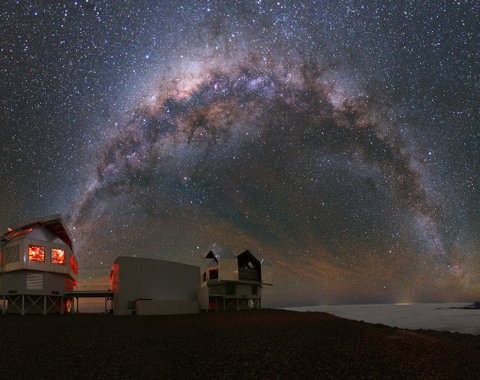2011 Astronomy Lecture Series

Each year the Observatories organizes a series of public lectures on current astronomical topics. These lectures are given by astronomers from the Carnegie Observatories as well as other research institutions. The lectures are geared to the general public and are free.
2011 Season
March 7, March 21, April 4, and April 28, 2011
Friend's Hall, Huntington Library, Art Collections, and Botanical Gardens
All lectures start at 7:30 p.m., with light refreshments in advance
Parking is free. To access the parking lot, please enter The Huntington via the Allen Avenue gate.
For more information about the Carnegie Observatories or this lecture series, please contact John Mulchaey.
Lecture Schedule
Dr. Christopher Burns
Research Associate, Carnegie Observatories
Are we alone in the universe? Like all the other Big Questions about the cosmos, the answer to this one has far-reaching implications for science, philosophy, and theology. To date, we have no conclusive evidence of extra-terrestrial life in our Solar System. But it's a big universe. To predict how much life, if any, could be out there, we need to understand how life got started here on Earth. Dr. Burns will discuss our current understanding of how life began on Earth and how likely it could begin elsewhere in our Solar System and beyond.
Watch recording
Dr. Rocky Kolb
Professor, The University of Chicago
Ninety-five percent of the universe is missing. Astronomical observations suggest that most of the mass of the universe is in a mysterious form called dark matter and most of the energy in the universe is in an even more mysterious form called dark energy. We have no understanding of the natures of the stuff that makes up our universe. Dr. Kolb will discuss the evidence for the dark matter and dark energy, and propose that unlocking the secrets of dark matter and dark energy will illuminate the nature of space and time and connect the quantum with the cosmos.
Dr. Alan Dressler
Staff Astronomer, Carnegie Observatories
The "modern universe" began when the first stars and quasars - ravenous black holes - began to flood the darkness. This 'first light' appeared a few hundred million years after the Big Bang, but some of it arrives at Earth every day - 14 billion years later. Amazingly, the largest telescopes and most sensitive instruments allow astronomers to see back to this beginning, but the view is dim and difficult. Dr. Dressler will describe what we have seen, and what the prospects are for the future, with more ambitious telescopes and new techniques.
Dr. Thomas J. Cox
Carnegie-Rubin Fellow, Carnegie Observatories
How did galaxies such as our Milky Way come to be? Astronomers now have a well formed and highly accurate picture for how our universe began - with a "big bang" roughly 14 billion years ago. However, physically mapping the initial conditions fo galaxies we see through modern telescope has proven to be a complex and elusive task. In this talk Dr. Cox will talk about how the combination of supercomputers and today's most powerful telescopes are working together to address outstanding questions about the origin and evolution of galaxies.